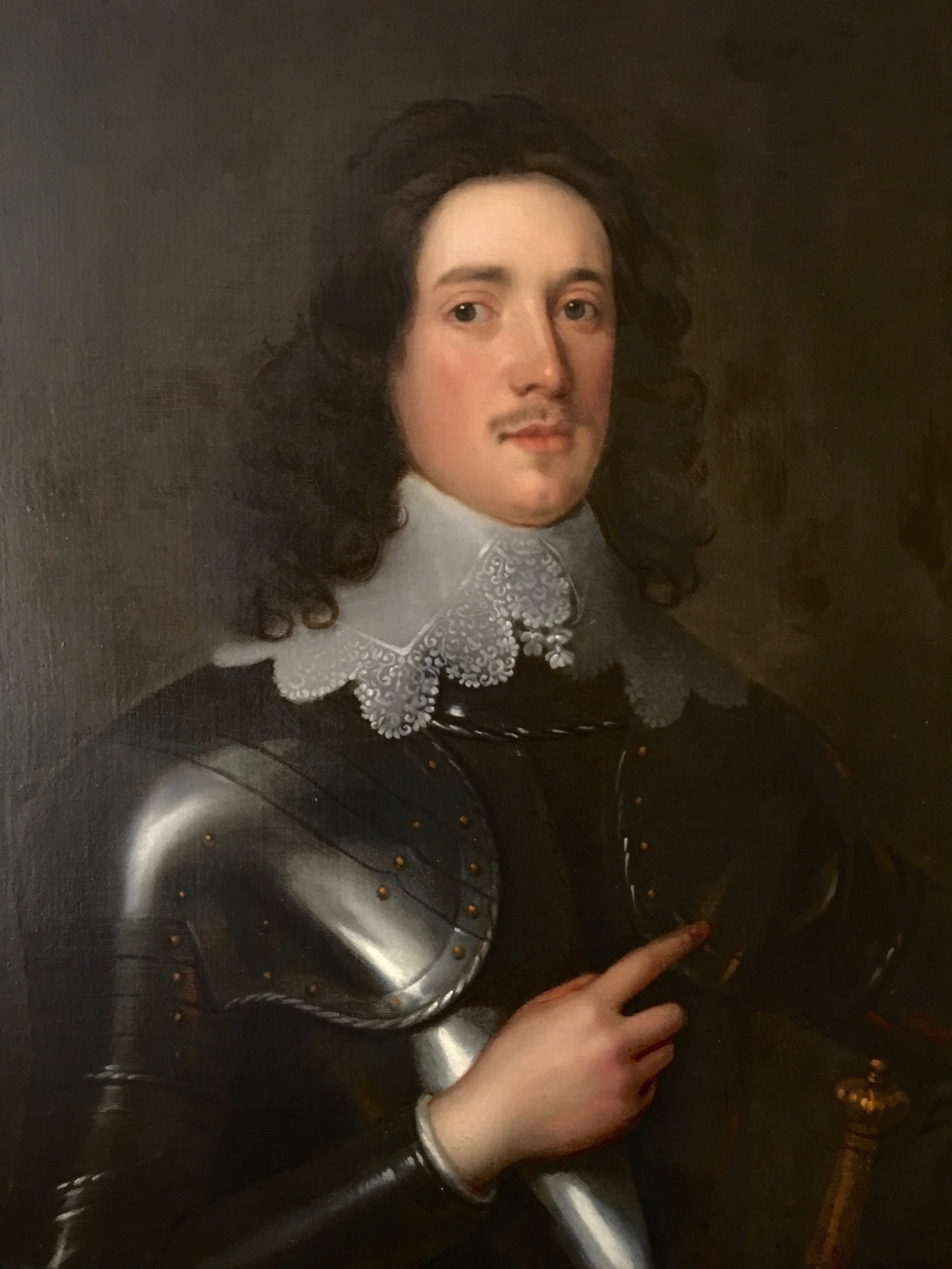





PORTRAIT OF A YOUNG GENTLEMAN IN ARMOUR C.1650 ATTRIBUTED TO ROBERT WALKER
Civil war portrait of a young gentleman in armour c.1650. Attributed to Robert Walker. 17th century oil on canvas in a later carved and gilded frame.
This portrait was produced in the 1650s and is attributed to the enigmatic painter Robert Walker (1595/1610-1658). Famous for his depictions of Parliamentarians such as Oliver Cromwell and Thomas Fairfax, little is known about his artistic training before he became an independent master in 1637. Joining the Painter-Stainers company in 1650, George Vertue wrote in the next century that “He lived in Oliver Cromwell's days, and drew the portraits of that Usurper, and all his Officers.” The several self portraits of him that do survive, most notably including the striking picture in the Ashmolean, provide us with an image of an artist who is acutely aware of his following in the footsteps of the great Sir Anthony Van Dyck.
In terms of composition, this picture is directly inspired by the head and shoulder portraits by Van Dyck. Compared with the Fleming’s fluid touch, Walker’s brush has a greater smoothness and softness, a trait especially felt in this portrait of a young officer. Although Walker was a painter of Parliamentarian sitters, it seems that both artist and client happily accepted the visual culture of the Royalist portraiture from the 1630s. Although the gentleman in this portrait wears his hair is a loose extravagant manner, and similarly wears an elaborate lace collar, this portrait encourages us to question our natural assumptions and stereotypes of the ‘puritan’ aesthetic.
Other portraits by Walker, including those of Sir Arthur Haselrig for example, also take their cues directly from Van Dyck’s portraits of leading figures of Charles I’s court. In terms of colouring and handling, the silvery flesh tones are also reminiscent of the early works of Peter Lely, who began his career in England after the death of Van Dyck in 1641.
The armour worn by the sitter is a loose depiction of a plain Greenwich armour dating to the first decade of the seventeenth century. Although found commonly throughout Van Dyck’s British sitters, this armour was rather antiquated by the period of the English Civil War. In an age where full plates of steel were less common on the battlefield, many were opting for a reduced armour consisting of back and breast plates accompanied by a thick leather buff coat, boots and helmet. Sir Edmund Verney, who fought at Edgehill, famous remarked that “for it would kill a man to serve in a whole cuirass.” Despite the changes underway in practical armour for battle during the mid seventeenth century, this portrait demonstrates the continued visual appeal of the traditional fully armoured warrior. Equally, many of the carved effigies in monuments found in churches also retain this ‘knightly’ apparel, despite its reduced practicality. Indeed, the presence of the golden hilted sword at the gentleman’s side further evokes notions of nobility, rank and readiness to defend or do battle.
Attempts to identify the sitter have unfortunately proven unsuccessful thus far.
It is quite possible that the young man may have been the promising son of a dissenting nobleman, whose identity has since been separated from this engaging image. Indeed, we can only speculate as to the fate of this fresh faced officer.
Higher resolution images on request.
Worldwide shipping available.
Internal Ref: 00024
Canvas: 23" x 30", 58.5cm x 76.5cm.
Framed: 32" x 38", 81.5cm x 36.5cm.
SOLD.

